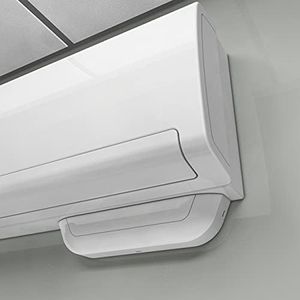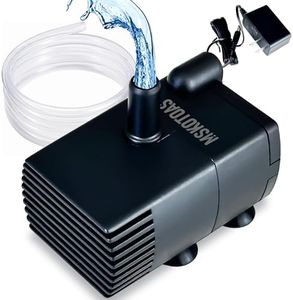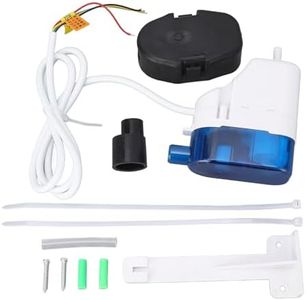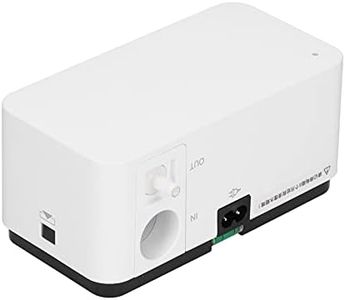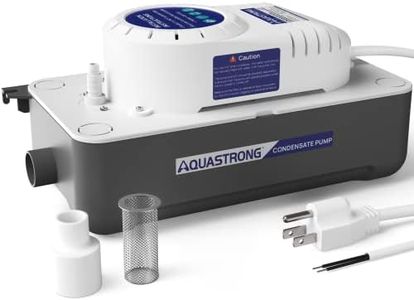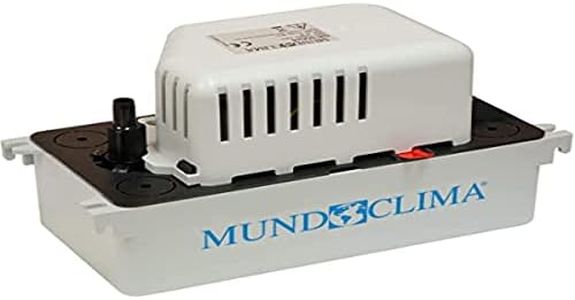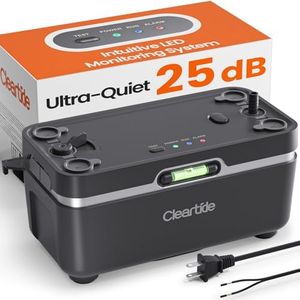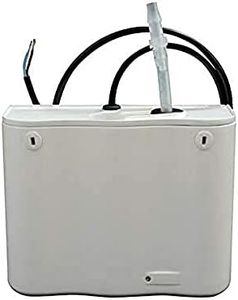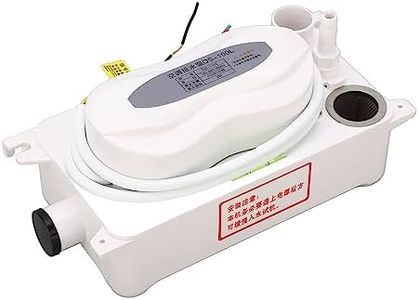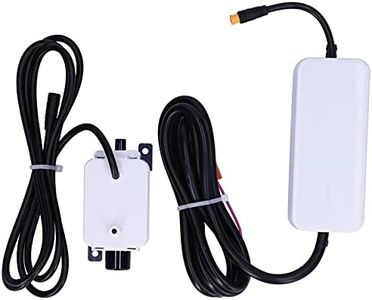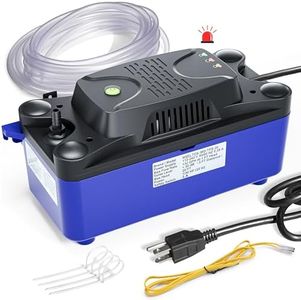We Use CookiesWe use cookies to enhance the security, performance,
functionality and for analytical and promotional activities. By continuing to browse this site you
are agreeing to our privacy policy
10 Best Condensate Pumps
From leading brands and best sellers available on the web.Buying Guide for the Best Condensate Pumps
Choosing the right condensate pump is important for anyone who has HVAC systems, dehumidifiers, or other appliances that generate condensate (water as a byproduct). A condensate pump helps move this water safely to a drain when gravity isn’t enough. Getting the right pump means avoiding overflows, water damage, and ensuring the unit runs smoothly. To make a good choice, you need to know what specs matter and how those specs fit your situation.Maximum Flow Rate (GPH or LPH)This spec, usually listed as gallons per hour (GPH) or liters per hour (LPH), tells you how much water the pump can move in a given time. It's important because it should match or exceed the amount of water your equipment produces. Small household systems might need something on the lower end, while larger commercial setups need higher flow rates. To choose, estimate your appliance's water output and pick a pump with some extra capacity for safety.
Maximum Lift (Head Height)Maximum lift, sometimes called head height, is the highest vertical distance the pump can raise water. This matters if your drain is above the pump or far away. Home setups often only need modest lift, but installations with longer or upward routes need higher head heights. Check your setup for how high or far the pump needs to push water, and make sure the pump's lift meets or exceeds that.
Tank CapacityTank capacity is the amount of water the pump's basin can hold before it activates and pumps the water out. Larger tanks mean the pump cycles less often, which can mean quieter operation and less wear. Smaller tanks are fine for low usage. If your appliance runs a lot or produces water quickly, choose a model with a larger tank to reduce the risk of overflow and to minimize cycling.
Noise LevelNoise level refers to how loud the pump is when running, usually noted as decibels (dB) or general terms (quiet, silent, standard). For installations in living spaces or quiet offices, opt for pumps labeled as 'quiet' or with low dB ratings. For basements or utility rooms, noise might not be as much of a concern. Match your noise tolerance to the location where the pump will be used.
Automatic Shutoff/Safety FeaturesAutomatic shutoff and safety features help prevent problems if something goes wrong, like if the pump gets clogged or can't move water out. Some pumps will shut off or trigger an alarm, which helps avoid water damage. If reliability and peace of mind are priorities, especially in sensitive areas, look for these extras.
Power SourceCondensate pumps typically plug into standard electrical outlets, but some specialized ones may be hardwired or need specific voltage. Make sure the pump's power requirements fit your available outlets. For most home users, a standard plug-in is easiest. Check your setup before buying.
Maintenance RequirementsThis includes how easy it is to clean and maintain the pump. Some pumps have features like removable covers or clear housings that make it easy to check for blockages and do regular cleaning. Easier maintenance is better if you want to avoid service calls or prefer DIY upkeep. Choose a model that matches how hands-on you want to be.
